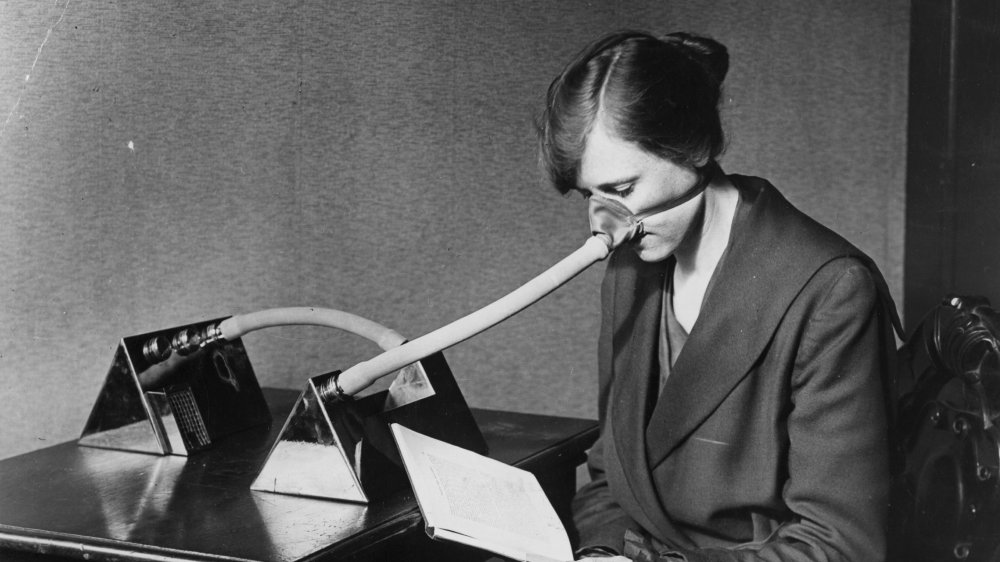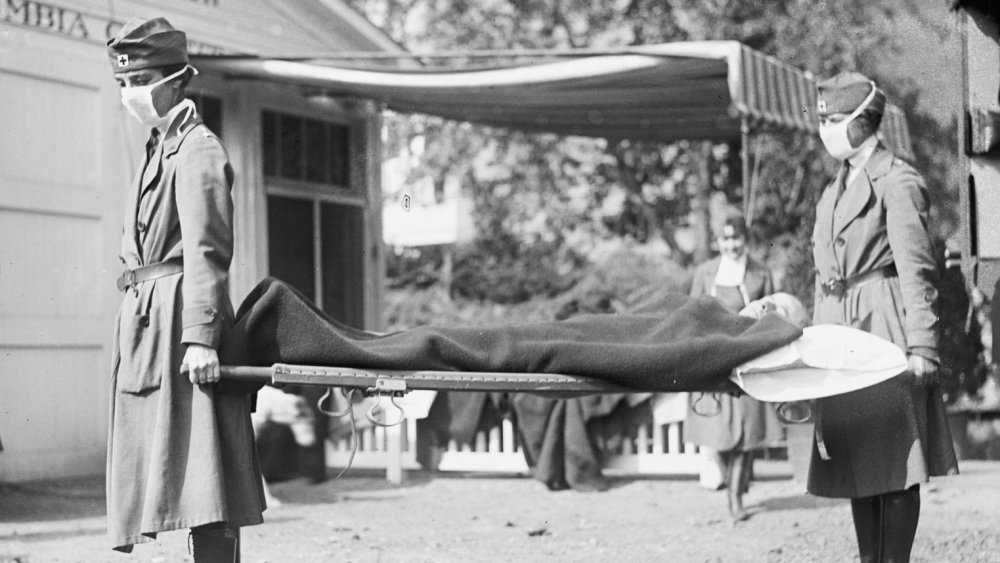What Life Was Like During The 1918 Flu Pandemic
In 1918, children used to skip rope to a rhyme that captured the tenor of the time. Via Stanford University, it went like this: "I had a little bird. Its name was Enza. I opened the window, And in-flu-enza." Unfortunately, Enza flew in through a lot of windows. The 1918 flu pandemic ended more lives in a single year than that the Black Death killed over the course of four years. And it killed quickly. According to one account, when four women got together to play bridge late into the night, only one of them lived to see the next morning. Simply walking down the street could mean dying of flu-induced pneumonia hours later.
While some estimates of the global death toll are as low as 20 million, that grossly underestimates the true loss of life, according to the National Academy of Sciences. Modern experts accept that the illness killed between 50 million and 100 million people worldwide. The flu decimated isolated communities, wiping out 14 percent of people on the Fiji islands in just 16 days. When it didn't end lives altogether, it upended them. One might say that Enza gave humanity the bird.
In flew Enza, out flew daily life
The 1918 flu pandemic caught much of the world off guard. Per the journal Public Health Reports, nations engaged in WWI kept the flu's severity and the extent of its spread under wraps so that the public only received positive news. When the flu wreaked havoc in Kansas and various military bases, that grim reality went unacknowledged by the U.S. government, according to Stanford University. Men preparing to risk their lives abroad were forced to ignore the peril they faced at home.
The war kept doctors occupied, making it harder to combat the flu. For instance, in Minnesota, hospitals were woefully overwhelmed and under-prepared. Experts debated the potential effectiveness of social distancing, with some advocating precautionary school closures and isolation while others rejected such steps as too intrusive. The University of Kansas declared a temporary shutdown which was only expected to last a week. Time reports that it ended up lasting a month, and in the end, more than 1,000 students and faculty were infected. Indoor activities became outdoor affairs. Per the CDC, some municipalities held court proceedings outside. Some cities restricted where and how people could gather, which met resistance from citizens who resented the rules. In Minneapolis, football teams flouted orders not to compete, forcing police to intervene. The public was instructed to wear masks and sanitation laws became stricter. In the midst of all this change was lasting tragedy, as people lost loved ones left and right.

